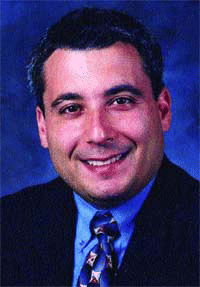Physicians have started performing more BAHA surgery in children with aural atresia, said Sam Marzo, MD, Associate Professor in the Department of Otolaryngology and Head and Neck Surgery at Loyola University Health System in Maywood, IL, and a consultant for Cochlear Corporation.
Explore This Issue
October 2007These patients can wear a tight headband with a bone-conducting hearing aid attached to it, but they are frequently noncompliant because they get headaches, making surgery the better option, he explained.
Another BAHA indication, approved in 2002 by the US Food and Drug Administration, is for patients with unilateral sensorineural hearing loss. These individuals wear the BAHA in the ear in which they cannot hear, and the device conducts sound through the skull to the opposite ear’s existing cochlear nerve, explained Dr. House.
In a recent study presented in April at the Combined Otolaryngology Spring Meeting (COSM) in San Diego, Dr. House and his colleagues evaluated questionnaires about hearing completed by 59 patients with BAHA implants and 54 patients without the implants. All individuals had severe to profound unilateral hearing loss.
The researchers found that patients experienced improvements in background noise, ease of communication and reverberation of 16.1%, 11.4%, and 5.4%, respectively. However, localization of sound was difficult for patients with unilateral deafness even with a BAHA, the researchers found.
Another option for this type of hearing loss is the contralateral routing of signals (CROS) hearing aid. However, this device uses a wire to conduct sound to the opposite ear, which can be cumbersome for patients, explained Dr. House.
A transcranial hearing aid in the deaf ear also transmits sound to the opposite side by bone conduction, added Dr. Kohan. However, the tight fit of the ear mold deeply into the canal is often painful, he said.
Surgical Implantation
Regardless of the indication, implanting the BAHA requires making an incision behind and above the ear and undermining an area of skin and soft tissue that is about 2 cm in diameter, explained Dr. House. The reason we undermine the skin is so the implant is flush with the bone and the skin does not grow over the abutment, he explained.
Then a small hole about 1 to 2 mm wide and 3 to 4 mm deep is drilled into the bone and the titanium implant is placed in the skull. An abutment is attached to the implant, and three months later a sound processor is connected to this abutment.

Leave a Reply